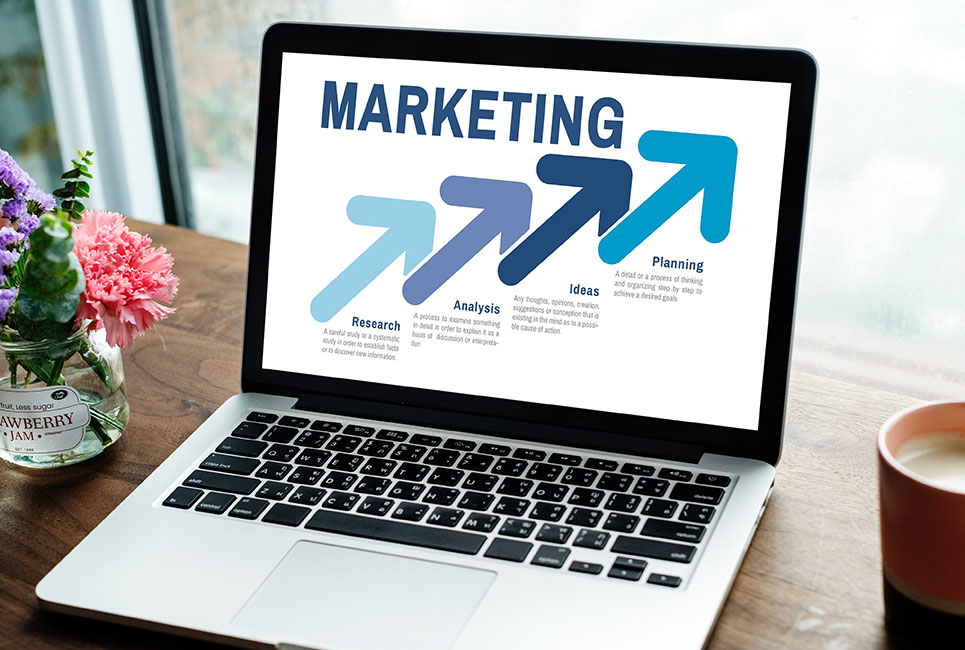Listen to our exclusive interview with Kim Le:
Subscribe to this show on Spotify | iTunes | Stitcher | Soundcloud
The recent surge in plant-based meat alternative options must have key players in the meat industry shaking in their boots. With newer products as tasty as—if not tastier than—the real thing, environment-conscious consumers and many fast food retailers are turning toward faux food options with gusto.
We talked to Kim Le, CEO and Co-Founder of Prime Roots, who explained to us that starting the company wasn’t much of a stretch from her own roots. “My mom’s a professional chef so I grew up in her kitchen and I’ve always been really interested in food,” Le explains. “I grew up in a very entrepreneurial family, all really focused on food and experiences around food.” As for the entrepreneurial side of her business, she admits that things have gone rather smoothly from the start, all things considered, and that she has been really fortunate to have a supportive ecosystem in place.
I think a lot of the entrepreneurial journey is about luck and meeting the right people and surrounding yourself with the right people.
Prime Roots Bacon is Here to Save America… and the World
Popeyes’s new chicken sandwich is here to save America. That’s what the New Yorker has to say about it, anyway. The fast food chain’s new meal is just that transcendent. Helen Rosner even calls it an object of near holiness, but Prime Roots wants you to think a little more carefully about which culinary experiences you call “religious”. It’s not that the plant-based food company wants you to sacrifice your palate on the altar of social change. It’s just that its protein substitutes really are that delicious. In the culinary universe of Prime Roots founder, Kim Le, you can’t release meat’s pressure from ecosystems if your tofu tastes like tofu. That’s why her vegan masterpieces are the true objects of near holiness in this story, both on a gastronomic and an ethical level.
Product Development for Yummies
In case you’ve been hiding under a pile of McDonalds Burgers all year, the ethics of veganism have now grown to include climate change. Animal agriculture is to blame for 18% of human-caused greenhouse gas emissions that drive climate change. That’s why Kim Le was willing to go through the torture of sampling every meat alternative she could get her hands on at her local supermarket—she’s part of a massive global transition towards eco-veganism, and she has the tools to spur change: a palate that can pry deliciousness out of the most unlikely plants and the R&D skills to turn science into flavor. “There is life beyond salads,” Le says, and the ashy, mushy textures of today’s protein substitutes simply will never manage to snatch chicken sandwiches from meat-loving hands.
Kim didn’t need much money to start with. She had a kitchen in her home and a supermarket in her neighborhood, so she created a matrix of the marketplace from her own trolley. It turns out you don’t always need a laboratory or a wealthy venture capitalist to develop a product line. She took stock of the texture, nutrition failures, and over-processing that dominate the meat-replacement market, then built prototypes and proof of concepts in her own home. Her koji-based super protein has the addictive umami notes you expect from Kobe beef and lobster, and her ethical delicacies will hit the shelves in 2020.
Prime Roots has already become a market leader. Large multinational companies are bashing down its doors asking how they, too, can enter the market. “One of our investors has a philosophy,” she says, “Better for the world. Better for me. The intersection of those two things has an exponential opportunity—financially but also in terms of unmeasurable impacts.”
Following the Yellow-Brick Dream
Twenty-four-year-old Le seems too quietly spoken to be as incisive as she is, but if you look a little closer, you’ll see that the unassuming Wizard behind the curtain has a booming voice and the magical talents to change the world.
The plant-based meat market is expected to grow into a $140 billion industry, and Kim has hopped on board early enough to dominate it.
Her company has just raised over $4.25 million in pre-seed funding through the esteemed IndieBio accelerator program. That funding helped Prime Roots to validate its technology before it raised its first seed round in 2018. More importantly, though, it didn’t require her to give away controlling interests in her business.
The process of getting funding and pitching or applying for things does take a lot of time away from building your company. So weighing that and understanding where you are in your company is so important.
This is all the more critical in the social impact space where there is more at stake than mere profits, so Kim is quick to warn entrepreneurs away from funding unless it’s completely necessary. It often comes with aggressive terms that require you to give up equity or control. In the early years of business, entrepreneurial dreams are sacred. They, and not equations or investors, are the wizardry that launches the world’s most legendary brands.
Still, Le is quick to add nuance to her warning. “There are also a lot of grants and capital that doesn’t come at the cost of equity so be on the lookout for those,” she says.
Prime Roots is a socially-motivated and wildly technical business, from both a culinary and a scientific perspective, so she needed an accelerator to add oomph to her initial efforts. The program she chose connected her to the venture capital world and equipped her with skills she’d not yet learned. It didn’t, however, foster dependence, and therein lies the difference.
Kim Le believes in connection, but not at the cost of business ownership unless absolutely necessary.
“Being in a basement too long is not a great thing because you have to get out there and validate what people want [and] get your ideas out there,” so each day, Kim puts on her figurative chef’s hat and engages with communities over her prototypes. Her product line is an artefact of those alliances. Better yet, they’ve dished up their share of marketing value.
Focus on the Entrepreneurial Family
You could thank Le’s qualification in agricultural production systems for her success. You could thank her foodie-dominated childhood and product-development experience instead. You could even thank the accelerator program that ultimately allowed her to scale, but then you’d be missing her most important business resource: Her family’s emotional support.
No business management 1.01 lecture will teach you how to hold onto your dreams under impossible circumstances. Business leaders are just born with the strength they need to overcome the confusion and doubt of their launch years, aren’t they?
If only that were true. “We’re approaching three years since I started to dream up the future I wanted to live in,” says Le, but these pre-launch years haven’t been easy. Entering the food space is no small feat. Her fear of the regulatory landscape, of capital requirements and scaling pressures, has been significant. She’s had the optimism and problem-solving skills to see her through the tough times, but she credits her supportive family ecosystem even more. In the coming months, the world will get to taste the results of that biome: chef tested, foodie-approved, and hearty, just like Prime Roots.
We also recommend:
Transcription of Interview (Transcribed by Otter.ai; there may be errors.)
Adam Force 0:12
Welcome back to the Change Creator podcast show. This is your host Adam Force and I am excited today because we have a lot of good stuff going on. So to kick it off, don’t forget go back to…if you missed…it go back to the last episode with Martin. We talked about scaling e commerce. Then even if you’re not in e commerce, there’s a ton of value here because this is a guy that has scaled several, seven figure ecommerce shops and now he’s addressing the plastic pollution space with his latest business, Moop. But annually, he has managed over 100 million dollars in Facebook ad spend. They were testing over 10,000 ads a day. So pretty big operation. He knows a lot because of the data and everything that he’s experienced–really good with that tool. So there’s a lot of good nuggets in there for learning how to scale.
Today we’re going to be talking with Kim Le and I believe that’s how to pronounce her last name. But she is one of the co founders over at Prime Roots, which is a really great company. And you know, being a vegetarian for seven years, for a number of reasons, you know, I love seeing these types of companies pop up because she is a super food vegan company. And it’s important when it comes to things like the climate crisis, we need more companies like this to start transitioning some of the food habits and take the pressure off the ecosystems. So we’re going to talk about how she created her proof of concept, got this thing started. And since 2017, just with that proof of concept, she was able to raise over $4 million in funding because this is a hot space, everybody. This industry, as we have to transition our foods and we get into this vegan or vegetarian space.
Investors are really into it and they see the importance around it. So we’re going to talk about the industry. We’re going to talk about how she got started and proof of concept and all that kind of stuff and the funding. Alright, so stay tuned we’re gonna dive into that conversation with Kim in just a minute. And if you guys haven’t stopped by Facebook, we…this is our like as always mentioned just reminding you that’s our primary social media channel that you’re going to find all of our updates. And from our Facebook page, you can find the Facebook group if you want to get into a more specific conversation about growing and scaling your business. It’s called the Profitable Digital Impact Entrepreneur. There’s a button on the Facebook page. Just stop by, follow us, get involved; we want to hear from you. And we appreciate that. So I think that pretty much covers it.
Last but…you know one other thing…Just don’t forget you know, we have a lot of good content guys out on changecreator.com. So if you haven’t swung by in a while swing by changecreator.com. There’s a lot of new guides that we’re putting out there. We’re really trying to organize the content and we did an organizational update. So when you go to the blog page now you’ll see the way that that’s set up and you’ll find different guides. Okay, and lastly, if you scroll down on the homepage, we do have the waitlist now for the Captivate Method. This is our signature program. It originally started in 2018, where we taught storytelling to help people attract the right customers for their business and really use storytelling. People were hungry for more. And they wanted to know more about the application to the business really using this to drive sales and things like that.
So we did expand the program. And we do teach how to start getting automated, and how to start setting up your sales stories, how to get more sales, more conversions. And we really lay that out there even we do key performance indicator measurements and stuff like that. So it’s a really robust program and we offer two coaching calls a month that are part of it so that you can ask questions in real time. So if that’s interesting to you, jump on the waitlist and we’ll send you some info, you’ll get a chance to join our Master Class with me and Amy, we’re going to walk you through this framework and everything that we do, and you can see if it’s a good fit for you. All right. So that’s about it. Let’s jump into this conversation with Kim.
Announcer 4:03
Okay, show me the heat!
Adam Force 4:08
Hey, Kim, welcome to the Change Creator Podcast Show. How you doing today?
Kim Le 4:12
Good. Thanks for having me.
Adam Force 4:13
Yeah, thanks for being here. I love what you guys are doing and I’m excited to learn more because it seems like you’ve already taken some big steps and we’ll get into that stuff but tell me just a little bit, you know, what’s going on in your world these days? Like what’s the latest and greatest in developments and what’s exciting for you right now?
Kim Le 4:35
Yeah, so bit of background. So primary, it’s we make a koji-based super protein, which is an ancient Japanese super food that we ferment and turn it into all different types of high protein food applications. And the first few that we’re going after are alternatives to meat and seafood, because the koji that we grow has the natural texture, the protein content and the taste of meat, and the umami notes just naturally. So that’s what we’re doing, currently. My day to day is really leading the team and leading the efforts to engage with our community or product development together, and to be able to make the best products that are truly no compromises.
Adam Force 5:24
I love that. And what got you into the business?
Kim Le 5:30
So I grew up in a very entrepreneurial family, all really focused on food and experiences around food. My mom’s a professional chef, so I grew up in her kitchen. So I’ve always been really interested in food. I went to UC Berkeley to study and also did a lot of research there where I was looking into agricultural production systems. And learned that a large part of the crops that we grow actually get fed to animals. And the way that meat is made is really inefficient because we’re feeding, you know, 30 calories of nutrient rich grains and legumes and other plant material that you could just, you know, whip up a [unintelligible] dish to feed a human, but we’re feeding it to a cow.
So that or any other animal to give us, you know, what we call meat. So I was questioning, you know, what is meat? And is there a way to make meat better, more efficient for our planet, and also for health? And so that’s kind of like what led me to, to approaching, you know, a very technical and socially motivated company from like a culinary and a scientific perspective.
Adam Force 6:40
Yeah, yeah. And, I mean, that’s an interesting perspective, just thinking about it that way. And it is technical. So it makes me curious, you know, you grew up in a family of entrepreneurs in the food space, and I guess, how do you even start thinking about approaching these ideas because I’ve had many ideas and I’m just sitting there saying, Well, how do you manufacture that? How do you even come up with the product idea? Who do you talk to, to start thinking about, you know, figuring out recipes or ingredients and breaking down these things, because there’s a lot of science behind it, I guess, and, and a number of other professional angles you had to look at. So where does that start for you?
Kim Le 7:23
I think it starts…so, for Prime Roots specifically, what really got us kind of rolling was I was part of a program called The Alternative Meat Lab at Berkeley. But in terms of like, you know, going from the classroom and the lad to the…to actually having a company that has a lot to do with, you know, the family and my ecosystem being really encouraging and supportive of the mission that I was after.
And I think because I had acquired the requisite toolset of you know, having launched products in the past, having developed products in the past, knowing what that trajectory looks like, made it a lot less daunting. Like, I can definitely imagine how, you know, how can seem very daunting from the outside because there’s like, regulations, scale up, like, where do you get the capital? All of that. It’s…there’s a lot of like moving pieces.
Adam Force 8:17
There is and I mean, and where do you find someone to say Listen, I want to create this substitute for, you know, the meatspace and different types…and like, where do you start? How do you start experimenting with solutions for that and testing them out?
Kim Le 8:35
So for me, it was really understanding what was the status quo in the industry? So early on, I would you know, I had always tried these products like just throughout my life, but I always had, like a literal bad taste in my mouth because it always tasted really planty, was mushy, like, Tofurky tasted like tofu which it is. Like, if you’re vegan/vegetarian/plant-based, you know, or you’ve tried these meat substitutes before, you know that, like, it can get pretty boring.
Adam Force 9:10
Oh, yeah.
Kim Le 9:10
Um, so I went to the grocery store pretty much bought everything everywhere and like started trying products. And I identified like the core issues, which were taste first, they just didn’t taste right, or they tasted like plants. And then the texture was also a really big issue. And then if you flipped over and looked at the label, there are many products kind of like the legacy brands that are definitely more nutritious than like the current like, up-and-coming brands. But you know, those are kind of like the three things that we think about [unintelligible] developing, and then and then after that, you kind of have a matrix and you know, like what needs to be done. And then you see, you know, how things have been done in the past, why it’s not working and then kind of go off of that to find better solutions.
Adam Force 10:00
Gotcha, gotcha. And I mean, do you need funding out of the gate to start, you know, getting in a lab and actually trying to cultivate these ideas?
Kim Le 10:09
So, I was able to get really good proof of concepts and prototypes of all of our products just in my kitchen. So we actually don’t produce any of our products in a lab. And we have a commercial kitchen. We also have a production kitchen that we work out of to basically grow all of our food and then also make it into the final products.
Adam Force 10:36
I love that. That’s awesome. And I’m curious like what inspired you though to…so have you…are you a vegetarian? Vegan? Like, where are you right now in your life?
Kim Le 10:47
I am pretty plant based.
Adam Force 10:49
Okay.
Kim Le 10:50
And I guess like, probably the most accurate like, identity although I’m not a fan of identities, probably flexitarian but 99.9% of my meals are plants.
Adam Force 11:02
Yeah, yeah, I’ve been the same way for about seven years, me and my wife, we, you know, it’s funny when I met my wife, this is about 10 years ago now, she was vegetarian and I was not. I ate meat regularly, I had no idea what’s going on in the world. And I was like this like salesman to her. And I convinced her …I convinced her to start eating meat again. And the year after that, I started, you know, being exposed to certain information and things that kind of really hit home for me. And I was like, man, we got to be vegetarian. Yeah, you wake up, and it’s like, and all of a sudden, so now the past, you know, seven years or so we’ve been vegetarian. And I mean, we do like a little bit of fish here and there, maybe once a week, like maybe, but we’ve been pretty good about being plant based these days and it’s getting easier and easier, that’s for sure, especially with great companies like yours coming out giving more options and things like that.
And I don’t know about you, but like, I’ve tried a lot of stuff. You know not to knock Tofurky here but yeah, I don’t really like Tofurky. But we find brands and they’re like, and sometimes people like, well, this doesn’t taste like a burger. And I always think to myself, I’m like, well, it doesn’t have to taste like a burger. It’s just another alternative. It’s…and I go, It’s not a burger. It’s not a hamburger. So it shouldn’t taste like that. So to me, I’m curious, like, are you really trying to mimic flavors or just make something unique of its own as a replacement with like, the nutrition and stuff?
Kim Le 12:34
I love that you bring that up because, like, as I have, like transitioned over time to being more and more plant based and actually lost the taste for meat, and like, and you realize how gross meat actually is. And also how like, one experience with me is never the same as another experience because you know, you have more feces, more e coli, more, like, whatever it is in like one version versus another. So something we think about a lot and that we’re actually seeing the industry move towards is, you know, how do we think about you know, what’s next? Like these…we are today imitating meat and seafood. And that’s…we really see as a transition.
And I think that like these products will always be in the market, we will always have these alternatives that look and taste and feel like meat. But if you look at the plant based milk industry, for example, there’s a there was a whole wave of you know, just trying to make something that looks and feels and acts like milk. And now there’s like more flavored milk and plant based milks that people are really loving and that shows that people didn’t really like the taste of milk. I tried to go to the grocery store to get my hands on this like tumeric plant milk the other day and it was sold out at every single store except for one an hour away from me and I like actually went and got it.
Adam Force 14:05
Crazy.
Kim Le 14:08
Just like, I like love the concept so much. And it definitely lived up to like the expectation. But yeah, we think about like what’s next? But I think today, the reality is 95% people still eat meat, and it’s just convincing people tho eat less meat. And that, you know, there are really great alternatives that exist. There’s a South Park episode recently. I really liked it. It was basically talking about how these alternatives are pretty much, you know, like their counterparts they’re, you know, mostly heavily processed junk foods. And people don’t really know the difference between the two. And so the junk was currently it’s like, Oh, I didn’t really care about like, it was this process or that process food. That it was just processed food. That’s what I like. Like I thought you’re gonna feed me broccoli which is not what veganism or plant based like there’s so many options beyond salads.
Adam Force 15:09
Yeah, it’s true and it is a transition. I mean you grow up completely just learning that this is how it is. I mean lots of great marketing kudos to the beef and meat industries for you know, making everyone believe that this is the way of the world. You know, same thing with the dairy it’s just like, you gotta have milk. Gotta have milk. It’s just like everyone will swear by it. I’m like, Why on earth would we be drinking milk from another species that is supposed to grow up to be 1000 plus pounds?
Kim Le 15:38
Also, like, so many people are lactose intolerant.
Adam Force 15:42
Yeah, there’s, there’s that too. And I say, Man, I would take cashew coconut milk over that stuff any day. It tastes so much better. It’s, it’s crazy.
Kim Le 15:53
But you can see like brands like Oatley, they have a far superior product in my mind. Really like infiltrating the lives of like meat eaters and becoming like the status quo. Like, screw grass-fed, pasture-raised, like cows like, oat milk, you know, is the thing that people bought.
Adam Force 16:12
Yeah, for sure, for sure. Yeah. And I’ll close out this little part of the conversation real quick with like something that we just found out like we were big fans of the Just Mayo option for mayonnaise. If you’re familiar, and all of a sudden for like a few months, it disappeared from shelves in the supermarkets. And I was like, What the hell is going on? Did something discontinue? And I was like doing all this research. And so we recently found out that it was Hellman’s mayonnaise. They were suing Just Mayo for using the word “mayo.” And they were doing that, you know, to keep them off the shelf. So all of a sudden, guess what happened? Hellman’s put out a vegan mayonnaise. And they were trying to just take over the market and that’s the part of capitalism that I hate. That’s like dirty business to me.
Kim Le 16:58
Yeah, I think that’s, like, a byproduct of our, like, somewhat dysfunctional, legal and like lobbying situation that we have in America.
Adam Force 17:09
Yeah, that’s a whole other interview. Yeah. So I guess I’m curious, like, you talked about the transition. So you’re building up this business and tell me where you are now. So you have all these proofs of concept. And was it you got funding? Is that through the Gates Foundation? Is that correct?
Kim Le 17:27
And no, so we went I guess more traditional venture capital. We went through an accelerator program, which really got us off the ground and so validating the technology, and then we raised a seed round last year.
Adam Force 17:44
Oh, awesome. And where did you do the accelerator program? Where was that?
Kim Le 17:48
It’s in San Francisco at an accelerator called IndieBio. So they incubated a lot of future food companies.
Adam Force 17:56
Okay, that’s it. So is it was kind of a niche accelerator.
Kim Le 18:01
Definitely.
Adam Force 18:02
Interesting. It was, is that an accelerator you had to pay to be part of?
Kim Le 18:07
They pay you. So it’s … it’s like considered a pre seed round. That’s kind of how we got our starts financially. Before that it was just bootstrapping.
Adam Force 18:21
Yeah, I mean, that’s the way it goes. So that’s pretty awesome. And, and what I guess I’m curious, like a to me like the animal world, one of the big parts of it aside from just animal welfare is climate change. How do you see yourself playing a role in that part of today’s you know, current situation?
Kim Le 18:43
Yeah, that is, like 100% the thing that like, keeps me going every day and, you know, makes me you know, wake up and like, I’m just so happy to be doing what I’m doing. It really drives me because I was a former, like, very competitive snowboarder. And so over the years, I would see, you know, resorts closing, the seasons getting shorter, and that’s really sad. Um, I also did a fair amount of diving and looking at reefs in Southeast Asia. And so my family’s actually there right now. And I told them that you have to go see the reefs because you won’t be able to see them in five or 10 years, maybe even next year, right.
And like my siblings, who are very much Gen Z’s they went and like they’re really excited to be able to go diving and see all these things, but they like they came up and they were like, it was really sad because it looked like blue planet or any of these documentaries were like things are bleached. And I went two years ago and the reefs are still vibrant. So it just it’s really sad because you know, you don’t get to see the effects of climate change every day except for you know, sometimes if you’re diving in the reef every day. But you know, the world is changing. And the fact that people care about it, but don’t care enough, as you know, is it saddens me, but at the same time, I think the solutions that we’re creating makes it a lot easier for people to contribute.
Adam Force 20:16
Yeah, yeah. I mean, that’s the idea is it’s you know, because everyone’s like, Oh, be conscious when you shop. And I guess that’s part of the transition in my mind, because I don’t want to leave it in the hands of people to have to think about that or make certain decisions one over the other, like my cost versus, you know, my well being and stuff. So I think it really falls into the hands of people just approaching businesses like you are to just make it a standard make this the norm, like why, you know what I mean? So just more holistically with the business. What is it not just the cost to the company, but the cost to the people and the planet and stuff like that?
Kim Le 20:49
Exactly. Yeah, like organic farming has really infiltrated kind of like our whole food system and like people, that was really by consumer demand. So about 10 to 15 years ago, was when you know, people started talking about organic, learning more about it. And Walmart was actually one of the first big players to really look into it and adopt it. And so it really does start from consumers, which is why I’m so optimistic about plant based because consumers are 100% driving the trend. We get large multinational companies wanting to talk to us pretty much like weekly, because they’re like, we need to get in and we don’t understand how to do it. Can you help us?
Adam Force 21:36
Really? And there are other food companies is are coming to you for consultation, basically?
Kim Le 21:43
It’s a mixed bag, but consultation/collaboration, and I think people see this as the way of the future, but they’re dissatisfied for one reason or another of the current alternatives that exist and the biggest concern for a lot of companies is how there’s been a lot of recent press around how really processed these newer meat alternatives are, how, you know, it’s not actually healthier for you. I mean, though, both of those claims can be rebutted. But I think it’s really about what the consumer perceives and what the consumer wants. And we have to give them that instead of, you know, going through a 5-10 year battle to change hearts and minds.
Adam Force 22:24
Yeah, yeah, that makes sense. Yeah, it’s true. I mean, the consumer demand has been an exciting shift, thanks to just a lot of people, you know, spreading information, and thanks to the internet and stuff like that, and I’ve seen some of those articles come out about, you know, combatting saying, well, it’s process and that’s true. So there’s, you know, maybe there’s a human health discussion, and then there’s a Earth health discussion, which, you know, they’re two different discussions, but also, you know, it’s a big part of it. So maybe this is all just transitional, you know, as we learn and we work with what we have so far, right?
Kim Le 22:56
Yeah. I hope it is transitional. If not, I’m still in this fight for the long run. Plant-based milks have gone from, like low single digits to almost 15% in the past few years. I see the same happening for meat.
Adam Force 23:12
Yeah, I mean, and actually, you know, investors are pretty hungry to get in this space. So that means that the space will continue to probably blossom with new innovations. And as far as just doing business the right way, as best we can within the current system is like, I…you know, when I started Change Creator, there was nothing about social entrepreneurship, not in any universities, no magazines, no books, and it was very hard to find any info. And so now you can look and it’s in 20 of the top universities around the, around the US, you have courses on social entrepreneurship. So you could see this trend of the businesses have to think smarter about what they’re doing. And then you see, you know, investors investing in these types of solutions. So that’s why I say, I hope it is a transition and it seems to be going up that way, which is nice.
Kim Le 24:04
Yeah, it’s 100%, one of our investors Collaborative Fund, they have a mantra, like a philosophy that, you know, better for the world better for me, products and companies, you know that the intersection of those two things, has exponential opportunity. So that’s financially but also in terms of a measurable impact that, you know, things like climate change. Yeah, moving the needle in the right direction. So I think investors are starting to wake up to that. And hopefully that trend continues.
Adam Force 24:38
Yeah, I think so. And, you know, now schools are starting to have part of the learning curriculum include climate change, believe it or not.
Kim Le 24:47
That’s awesome.
Adam Force 24:48
Yeah. I mean, I could just see this future of like, this climate change thing that we’re battling, and now it has, it’s so serious that like, we need to have actual course curriculum. My kids are going to grow up with like, becoming climate warriors basically.
Kim Le 25:05
And that’s so empowering.
Adam Force 25:08
It is. I think it was Norway that’s doing that.
Kim Le 25:12
Oh, that’s awesome.
Adam Force 25:13
Yeah, pretty, pretty interesting. And I, once I heard that as, whoo, that’s, I can see where this is going. Because it is such a serious thing. And God, you know, with everything going on, we need all the help we can get. So if they can teach at a young age, like what all the important parts of this conversation are, that’s, that’s awesome.
Kim Le 25:31
Definitely. Yeah. And I think it’s important for like, the US and in general that, you know, of course, there going to be skeptics and climate change deniers. And it’s really important not to focus on those people and focus on like, how can I personally as a person involved in organizations or not, you know, help better the situation for all and instead of trying to like fight and waste your energy or trying to convert people that have their minds and hearts in a certain place.
Adam Force 26:03
Yeah, yeah, definitely. So I guess I’m curious now, how long have you been? When was your? When did you start Prime?
Kim Le 26:13
I started the company around January, February of 2017. So we’re approaching about like, three years since when I started to dream up the future that like I really wanted to live in. And so that started then. I was going through the program at Berkeley and then kind of one thing led to another. And it’s been I mean, looking back I can’t believe it’s been three years.
Adam Force 26:41
Yeah, the time goes quick. What were some of the bigger challenges? Any big major challenges like that just stand out to you that you had to try to get through or you know, did you ever have a point where you felt like oh my god, this is not gonna work?
Kim Le 26:56
Truthfully, I don’t think we’ve ever faced that type of like feeling because I’m sure at the moment it felt like it and I probably like brushed it under the rug. But I’m a really optimistic person and I love to problem solve. So I take it as an opportunity to kind of like solve problems and so we haven’t hit any like catastrophic problems yet, you know, knock on wood. I think a lot of the entrepreneurial journey is about luck and meeting the right people and surrounding yourself with the right people. And I’ve been very fortunate to have a really supportive ecosystem.
Adam Force 27:42
Yeah. Well, it sounds like that accelerator and your family like it’s been…it’s served you well.
Kim Le 27:47
Yeah. I think the one thing that entrepreneurs and just generally people don’t talk about is the importance of family and I would not be here without family. And they helped me tremendously just like, every day.
Adam Force 28:06
Yeah, yeah, that’s awesome. I mean that–you’re right–that ecosystem is really important. And every time we meet people, I mean, you gotta get out there too. I think a lot of digital entrepreneurs today just get stuck behind the desk trying to create the next sales funnel. And rather than, you know, building their networks and realizing that you never know what doors are gonna open, I mean, we went to San Francisco for a conference and we found out that a Nobel Peace Prize winner and Dr. Muhammad Yunus was doing a talk down the road at the Commonwealth Club. And they were sold out of tickets and stuff.
We’re like, well, let’s call them and we went in as they let it was like $200 a ticket, but they let us in for free because we said we’re media. And we wanted to interview Dr. Yunus. We ended up doing a whole magazine cover story with him totally off the cuff but never would have happened if we weren’t out and about, you know what I mean?
Kim Le 28:51
So awesome. Yeah, it’s like, I think just being out in the world, it’s when you’re building a company, it’s really important to be focused and like, building and like actually making something people want and validating that, but like being in the basement for too long, like, it’s also not a great thing because you have to get out there and like, actually validate if people want to talk to people get your ideas out there. So that’s been the learning, definitely, cuz I spent a lot of time kind of just in my own head, just like in our kitchens working. And it’s so important to get out and talk to people. And we’ve been focusing a lot and building our community to really help with that.
Adam Force 29:37
Cool.Yeah, that’s amazing. By the way, how much were you able to raise to get this thing going?
Kim Le 29:44
Um, so our seed round was a little over 4 million. And so we, yeah, we raised that last year, and we’re set to pretty much launch our products early in 2020. So we’re really close.
Adam Force 30:03
Awesome. And I was just curious like, so going through the accelerator just for people listening who are in, you know, doing this type of stuff…is the accelerator is…did they connect you with the venture capitalists? Did that help make it easier to…not to get the funding, but to just get the connections?
Kim Le 30:21
100%. I think accelerators and incubators are great for steps for entrepreneurs that are thinking or know that they need, you know, venture capital or just general capital to scale their businesses. And I think the first thing you have to ask yourself, if you’re kind of like thinking about getting funding is do I really need the funding? And so, you know, there’s a lot of great blog posts and essays on the internet about that. So if you’re building something that requires a lot of capital, not necessarily like at scale [unintelligible] at scale, but you have to if there’s a way you can do it with less money now, you should definitely bias towards that.
And if you can do it with your own money or with friends and family 100% do that, because taking capital comes at the cost of losing ownership of your company. And, you know, obviously dealing with more people having more expectations like you don’t…like it’s not 100% your company. And so accelerators and incubators if you do think that like the venture path is right for you, is 100% like the best way to start because these ecosystems are really connected to the venture capital world. That’s where a lot of people actually source talent and deals from. And then secondly, there’s usually a program that you go through that really gets you from like zero to maybe like 0.5. I won’t say zero to one, you know, like, you got a good proof of concept. And like an understanding for how to run a company kind of being like handheld through that process. And that’s really valuable.
Adam Force 31:59
Yeah. Yeah, that’s amazing. I mean, that’s a lot of good advice, too. I think some people get really confused about whether they should…I mean, I was looking around originally when I moved to Miami and people wanted like…like one accelerator I spoke to is like, Yes, it costs us 15 grand a week they wanted. So, I mean, I guess everyone has different models and stuff, you got to find one that’s right for you. And sometimes they’re not in your area. So you’d have to go and like, they want you to be there in person a certain amount of the time and it can be a little bit difficult sometimes.
Kim Le 32:32
Yeah, it’s definitely a commitment. And there’s, you know, like, the most famous accelerator by far is Y Combinator. They’re pretty much you know, agnostic to type of company. And that’s a great program. And if you know that you’re a more niche company that you want specific support with, like, for example, biology, and IndieBio is a great one for that. There’s also a lot of grants and you know, capital, that is…doesn’t come at a cost for equity. So, you know, be on the lookout for those as well.
Adam Force 33:04
Yeah.
Kim Le 33:05
Just remember that, you know, the process of getting funding and pitching or applying for things does take a lot of time away from building your company. So weighing that and understanding where you are in your company is so important.
Adam Force 33:19
We went through that same exact thing. We spent about, I don’t know, probably a year where we were trying to run our business and build it up. And then also do the travel and meetings for all like potential investor pitches. And we…at one point, we’re like, you know what, like, we’re making money with these products. And I’d rather just like put more water on those and see them grow than divide our time. We quit going after investors and said, screw it, let’s just focus all of our energy on doing what we gotta do. And, you know, I guess that’s a decision everybody has to make at some point.
Kim Le 33:49
It’s a, it’s a snare that most entrepreneurs will run into.
Adam Force 33:53
Yeah, I mean, and that’s the thing because you really, to your point, when you said it takes a lot of time. You’re right. So it’s like we had to say we’re either going to dedicate all of our time to this or this. So which ones are going to be, right?
Kim Le 34:05
Understand that, I think finding the right people to partner with is better than finding just money from the wrong people or people who don’t see eye to eye. Because they can be a lot more trouble than they’re worth. And so, like control your process and like, for example, if you do say this is taking too much of my time, or we’ve had cases where, you know, we’ve had great opportunities come up and fundraising and you know, getting capital is really kind of this all in or not, and just saying like, okay, we’re going to do this other thing instead. And controlling your process is like, really empowering. And, also like something you should, you know, kind of think about.
Adam Force 34:47
Definitely.
Kim Le 34:47
Opportunity costs.
Adam Force 34:48
Opportunity costs. Exactly. Now those are great points, great points, and we are just about out of time here. So we’ll wrap up and where can people find you? Can you give them, you know, the best location online for them to check you out as you get ready for your launch and everything.
Kim Le 35:05
For sure we’re at primeroots.com. And actually on our website, we have ways that you can get involved. So you can join our general waitlist membership, which is completely free. Basically, you give us your email and your zip code. And we’ll be really mindful of sending you things when we’re in your area or if we have any big announcements, and we send out emails like very infrequently. And then if you’re like really, really passionate about the future of food and want to help us in a more involved way, we have an ambassador program, where it’s also free. You just apply, a survey and you get to be part of our tester group. You’ll get invited to Ambassador only events, and it’s a more tight knit community for people that really want to be more involved. But all in all, we love our community, we always host events and we’ll be launching in the Bay Area early 2020.
Adam Force 36:03
Well, we’re looking forward to it. And I appreciate you taking some time today to talk about what’s going on in your world and we’ll keep an eye on it and get ready for your launch.
Kim Le 36:13
Yeah, thanks Adam.
Adam Force 36:14
Alright, have a good one. Talk to you later.
Kim Le 36:15
You, too. Bye.
Announcer 36:16
That’s all for this episode. Your next step is to join the Change Creator revolution by downloading our interactive digital magazine app for premium content, exclusive interviews and more ways to stay on top of your game available now on iTunes and Google Play or visit changecreatormag.com. We’ll see you next time where money and meeting intersect right here at the Change Creator podcast.
Transcribed by https://otter.ai























